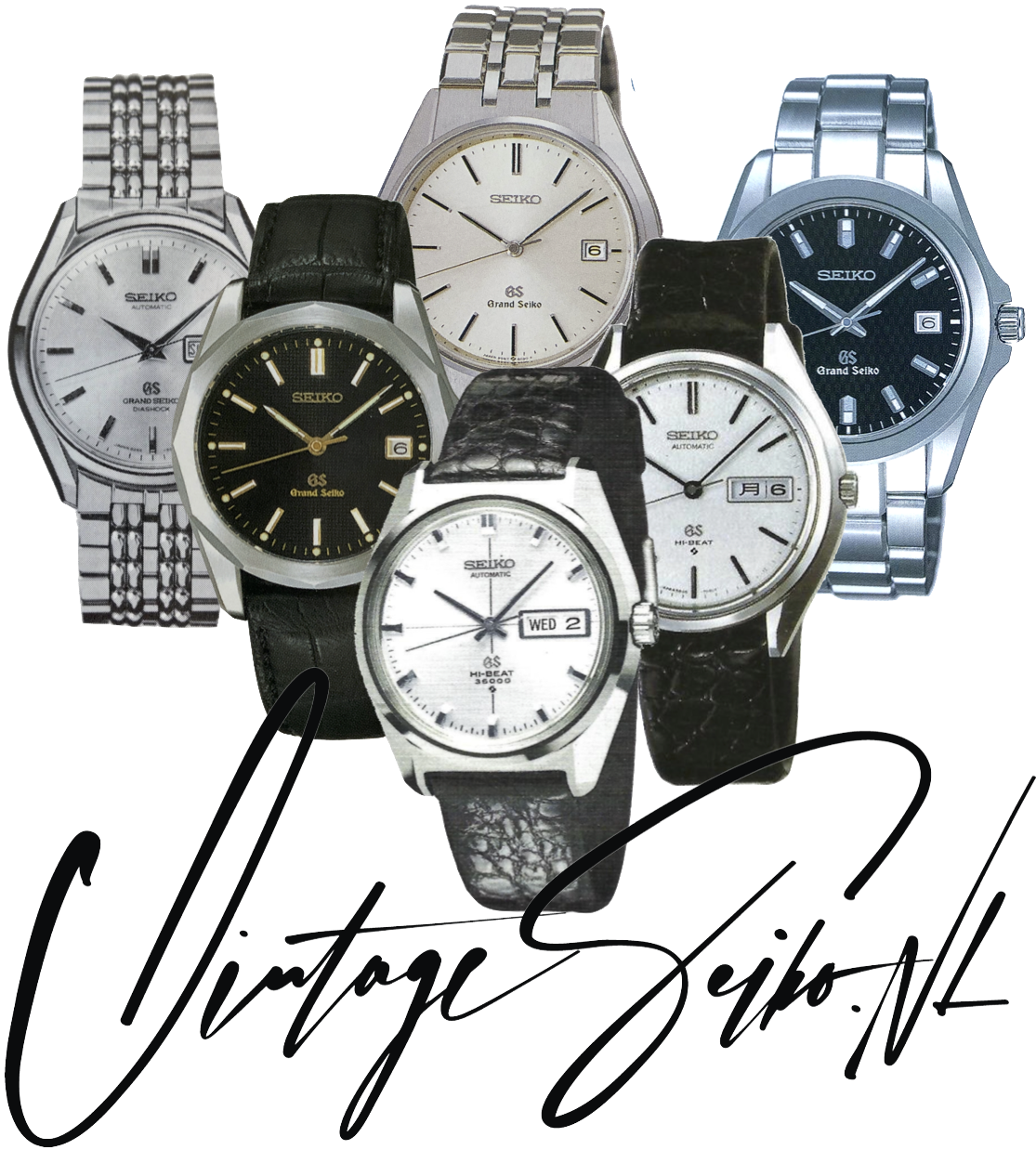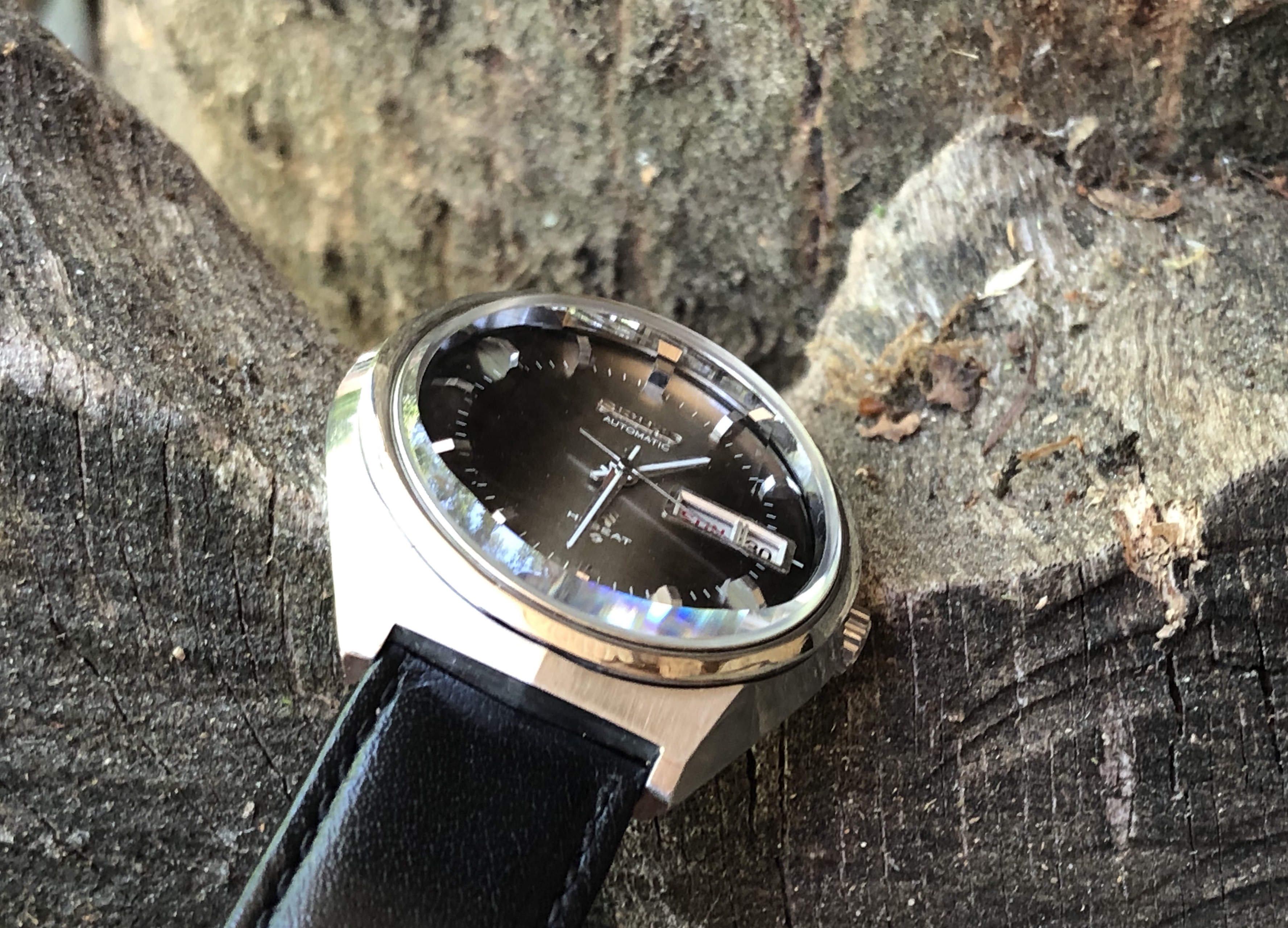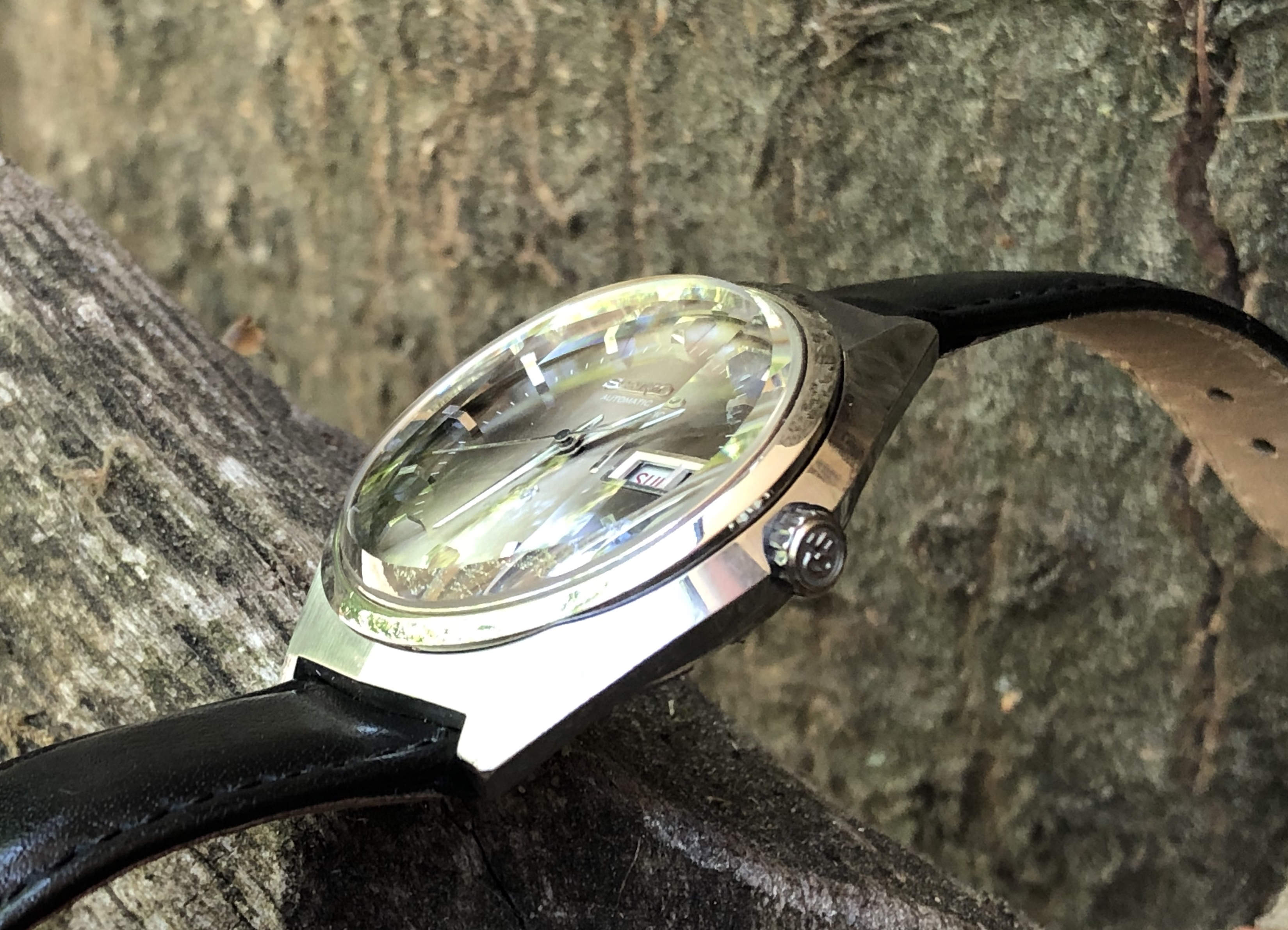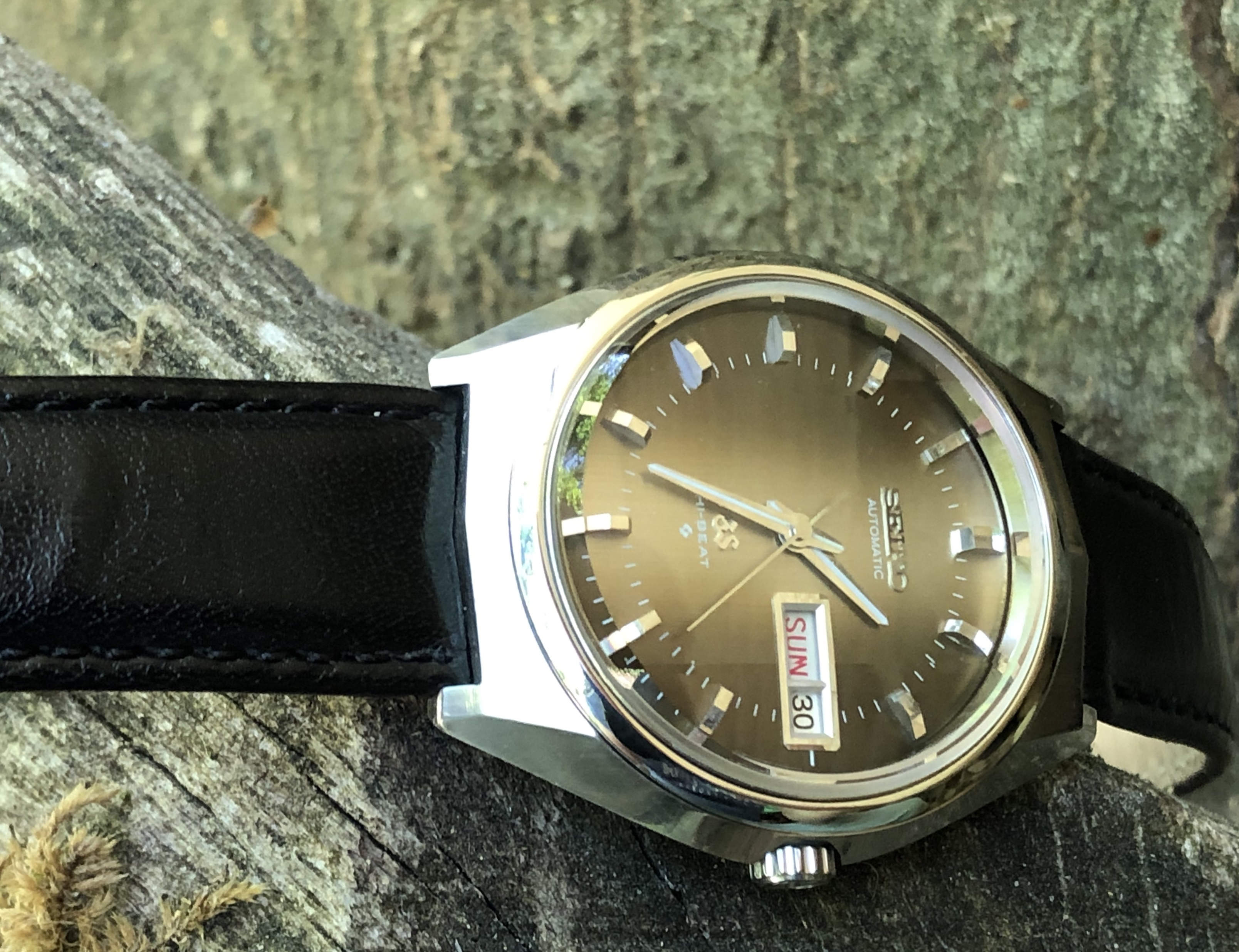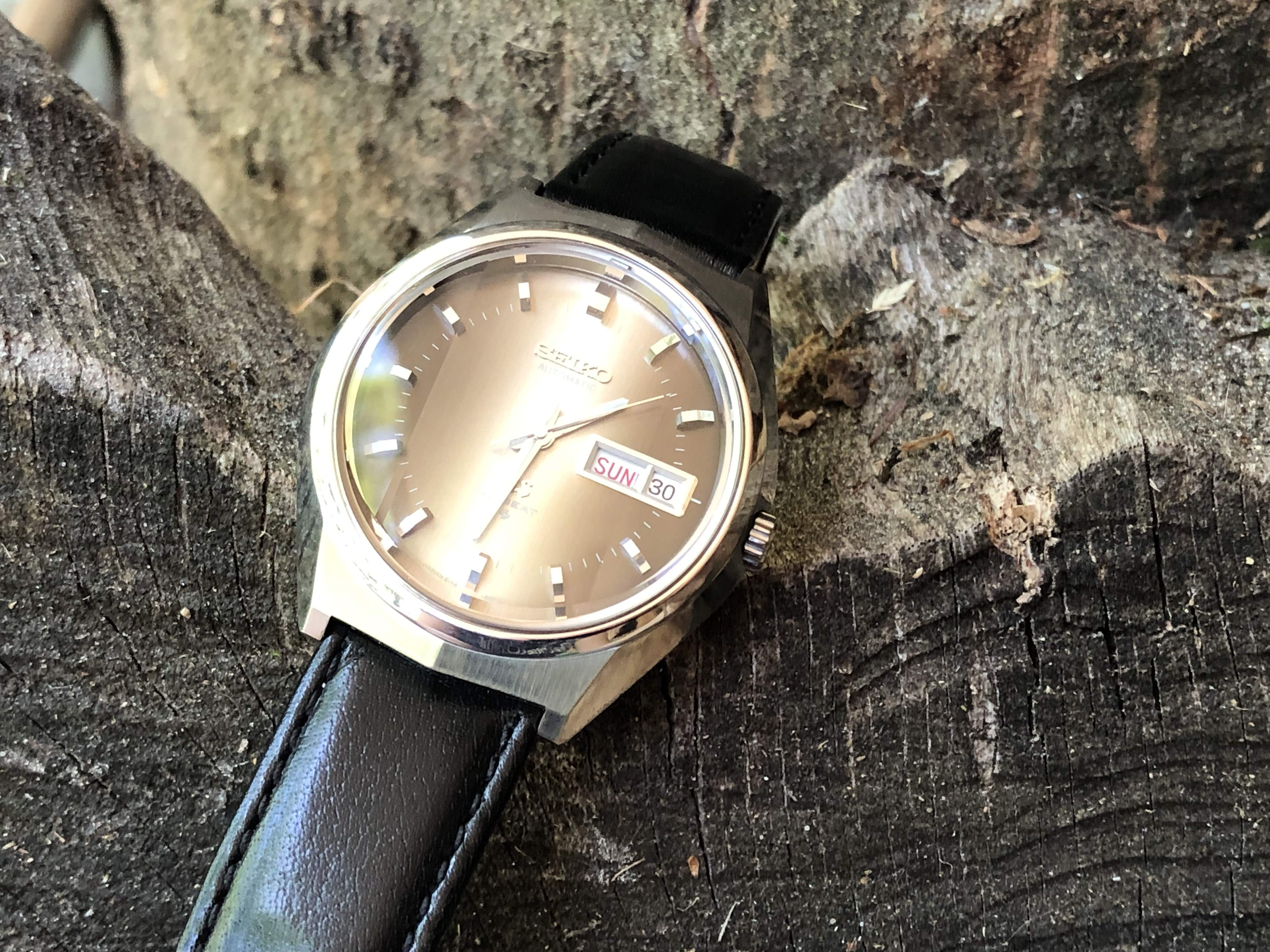
Grand Seiko 6146-8050 (Sold)
€ 1825.00
Sold out
| About | Details | and then some |
|---|---|---|
| Manufacture | Seiko | Grand Seiko |
| Model reference | Unknown | 6146-8050 |
| Movement | Automatic | |
| Caliber | 6146 | |
| Dial | Brown Gradient | |
| Case | 38x42x12mm | Steel |
| Lugs | 18mm | |
| Bracelet | Leather | 22cm |
| Crystal serial # | 310V16GCSF | Hardlex Facet |
| Timegrapher | Amp 259 Err 0,0 | Accuracy:+10spd |
| Jewels | 25 | |
| Serial # | 25xxxx | Production: 1972-05 |
| Condition | Excellent | |
| Service | Full service | |
| Box & Papers | No box | No papers |
First released in December 1967, Grand Seiko released just 36.000 watches of its 61GS caliber in 12 years, ending it all in 1972. Grand Seiko wanted to have its own unique style that would resonate with the high-end market in Japan, large production numbers apparently did not meet their standards or marketing. It definitely was a Japan only watch, which explains a quirky feature, namely the blank spot between the day change from one to the next - for this is a single language caliber...
When the original Grand Seiko watch was created in 1960 quality mechanics was the aim. Design esthetics only really kicked in around 1967 when the 44GS was released with the iconic “Grand Seiko Style” by designer Taro Tanaka. Most future Seiko products were to be influenced by this.
The Vintage Grand Seiko range is also highly respected for the traditional way in which they were made - every watch polished by hand according to the “Zaratsu” way, a traditional polishing to a finish with no distortion and in two dimensions only. The Suwa division produced most of the Grand Seiko watches, except for the 44GS, 45GS, and 45GS VFA movements, which were created by the Daini division. The two companies competed with each other and if If either one experienced problems in production, the other would simply increase.
The 61GS movement was adjusted to be within -3/+5 sec/day out of the factory and a six digit chronometer number was engraved signifying this watch has been certified as such. Early 614X-8000 models, gold cap too, had Grand Seiko written on the dial with 8000TAD at the 6 o'clock. Later models sported automatic under Seiko and just had GS and Hi Beat 36000, with 8010TAD at the six. The rotor was marked Seiko.
Eight models however had the same 6145-8000 used. But there are differences of course
- Steel -8000 with Grand Seiko on dial - leather strap (1968 - 37,000 Yen)
- Steel -8000 with Hi-beat on dial - leather strap (1969 - 37,000 Yen)
- Steel -8000 with Hi-beat on dial - bracelet (1970 - 40,000 Yen)
- Cap gold -8000 with Grand Seiko on dial - leather strap (1968 - 45,000 Yen)
- Cap gold -8000 with Hi-beat on dial - leather strap (1969 - 45,000 Yen)
- 18K gold -8000 with Hi-beat on dial - leather strap (1969 - 190,000 Yen)
- Steel -8000 with Cross hair dial - leather strap (1969 - 37,000 Yen)
- Steel -8000 with Cross hair dial - leather strap (1970 - 40,000 Yen)
The “cross hair dial” version of 1969 was apparently only on sale for around 1,5 years, as shown in the 1970 first half catalogue only. To put a twist on the above list however one might consider the third digit of any Seiko movement code, which will be a “4”, “5,” or an “8”. It is used to identify the quality. Simply put, the higher the number, the more accurate the movement. With Grand Seiko there is always good, better best. But for each buyer there is a grail watch, design oriented like the cross hair models or from a horological chronometry perspective like "the third digits".
